
Maine
#21 Katahdin, elevation 5,269 ft.
Thoreau, the AT terminus, and the Knife Edge.
First, a word about Percival Baxter, for whom the highest peak on Katahdin, and the vast, wild park over which the summit looms, is named, beckoning and funneling clouds down into the basin below.
This pride of naming is as it should be, for we owe the pristine Katahdin wilderness to the foresight and generosity of Baxter, the governor of Maine who, after being thwarted in an attempt to create a state park around the peak, bought the land on his own (once out of office) and ensured, through iron-clad deeds, that the region would remain a park—or, more accurately, a "wilderness"—and that it would be held in the public trust for the people of Maine. Baxter's initial purchase comprised more than six thousand acres, including Katahdin. Today, Baxter State Park covers some 209,644 acres, most of which are managed strictly as a wildlife preserve. [Editor’s note: I wrote this text years ago, before acknowledgments of the land rights of Indigenous peoples had gained greater public awareness. I’ll need to revisit my research soon to recity this oversight.]
Another guardian spirit of the Maine woods, Henry David Thoreau, would have approved of Baxter's coup de theatre. When I was a junior in college, I was fortunate enough to take a seminar on Thoreau and Emerson with Stephen Cushman, one of the leading lights of UVa's superb English Department. I can sum up Mr. Cushman's teaching strategy in our seminar in just a few words: we picked a passage from that week's text, we read it aloud, and we discussed it. That was it; and brilliant it was. At the time, Cushman was auditing a class on ancient Greek because he thought it was just something an educated person should know. In one class we discussed Thoreau's use of a Greek rhetorical device known as chiasmus, in which the two components of a grammatical action are repeated and reversed in a subsequent phrase, thus making an "X" when diagrammed. My fondness for Thoreau relates in part to his own fondness for such devices both subtle and bold: one moment you're in the woods bearing up under an overly long description of bateau techniques, and the next you are soaring high on flights of wildest metaphor. This key passage in Walden, a favorite of a lot of readers, has stayed with me ever since:
"I long ago lost a hound, a bay horse, and a turtle dove, and am still on their trail. Many are the travelers I have spoken concerning them, describing their tracks and what calls they answered to. I have met one or two who had heard the hound, and the tramp of the horse, and even seen the dove disappear behind a cloud, and they seemed as anxious to recover them as if they had lost them themselves."
Transcendentalist symbolism notwithstanding, I think of this passage often when in the woods or on a mountaintop or talking to the people I meet in huts and bunkhouses and on hiking trails. A lot of us seem to be looking for something. The eighteenth- or nineteenth-century intellectual would have called it the "sublime," but for me it is difficult to read divinity into the unreachable places of the earth. Unlike Thoreau, I don't think I know what I've lost, much less what its call would be if I managed to hear it. But I nonetheless seek out the mountains and woods, and it is in the woods and on the mountains that I feel closest to what I seek.
As for our trip up Katahdin, the divine Pamola was kind to us: we hit the bull's eye in terms of weather, and our bunkhouse mates at Chimney Pond couldn't have been nicer (shout out to Lenny, Mike, and their clan). Since we were newbies, Clem and I decided to take the "easy" route up, the Saddle Trail, in order to preserve our energy for a possible traverse of the infamous Knife Edge, the thin ribbon of ridge that connects Baxter Peak, the true highpoint, with Katahdin's other prominences: South, Chimney, and Pamola Peaks.
The Saddle Trail was the easiest part of the day. We made it up in about two hours, then slowly plodded up and across the broad, flat Tableland and up to the summit of Baxter, which is revered as the northern terminus of the Appalachian Trail (AT). When we got there, several AT thru hikers were already at the top, including "Hawkeye," an older gentleman whose signature we later found on one of the ceiling tiles of the Appalachian Trail Cafe in Millinocket, which each year sets aside a tile or column to be signed by all of the AT hikers that pass through town. And throughout the day, no matter where you were on the ridge, you could hear the whoops and hollers and celebrations of the thru hikers echoing in the basin. I saw at least one bottle of champagne that had had been lugged to the top.
It had rained, snowed, and sleeted on the socked-in summit the day before, but for us it was clear if a little windier than we would have liked. Clem, ever cautious, and rightly so, was unsure of doing the Knife Edge in the wind, but after patiently putting up with my cajoling (and the reports of a few other parties arriving from the other direction), he decided we should go to South Peak and see what it was like.
The Knife Edge is not as dangerous as it often looks in pictures and videos. There are a few narrow spots, and the Chimney requires some groovy scrambling—so it's not to be trifled with, especially in gusty conditions—but we took our time, had fun, shot some pictures and video, and made very merry indeed on the mountaintops of Maine.
Then you have to get down. Having reached Pamola Peak, which is at the opposite end of the Katahdin crescent from Baxter, we had but one real choice since we were camped at Chimney Pond: the Dudley Trail, which plunges, and I do mean plunge, down the ridge and along a boulder field directly above the campground. It doesn't take that long, but it is tedious and tiring, and it was by far the hardest and windiest part of our day. The most topographically intense section of Dudley was purported to be the last little bit (and thus the first section on the way up), but Clem and I agreed that the middle passage, with the largest boulders, was by far the most taxing.
Back at Chimney Pond we sat for a few hours in the afternoon watching the wind on the pond and rehashing the hike. Gusts were picking up, and occasionally a miniature mistral would sweep across the water's surface; a small water spout even formed and blew across the water, which you aren't allowed to wade into or swim in owing to ongoing conservation efforts. Directly across was a clutch of dead trees, stark white in the afternoon light, that to me read as sentinels from a place seemingly within one’s grasp but where we, as creatures of this world, with our trekking poles, synthetic shirts, freeze-dried meals, and Tyvek maps, cannot go.
Most of Thoreau's essay "Ktaadn," published posthumously in the volume The Maine Woods, concerns his trip through the surrounding woods and lakes in search of the summit, not time spent on the ridge itself, which he reached almost 167 years to the day before we did. Like many of the thousands who in subsequent years followed his path, Thoreau saw no views because the summit was socked in, which nonetheless did not stop him from waxing metaphoric:
"The tops of mountains are among the unfinished parts of the globe, whither it is a slight insult to the gods to climb and pry into their secrets, and try their effect on our humanity. Only daring and insolent men, perchance, go there…. Pomola is always angry with those who climb to the summit of Ktaadn."
Pamola, a god in Abenaki mythology, is said to have the head of a moose, the body of a man, and the wings and feet of an eagle. He is at once the god of thunder and protector of the mountains, and he causes cold weather. Thank you, Pamola, for your benevolence to us, strangers in your land, on that magnificent day.

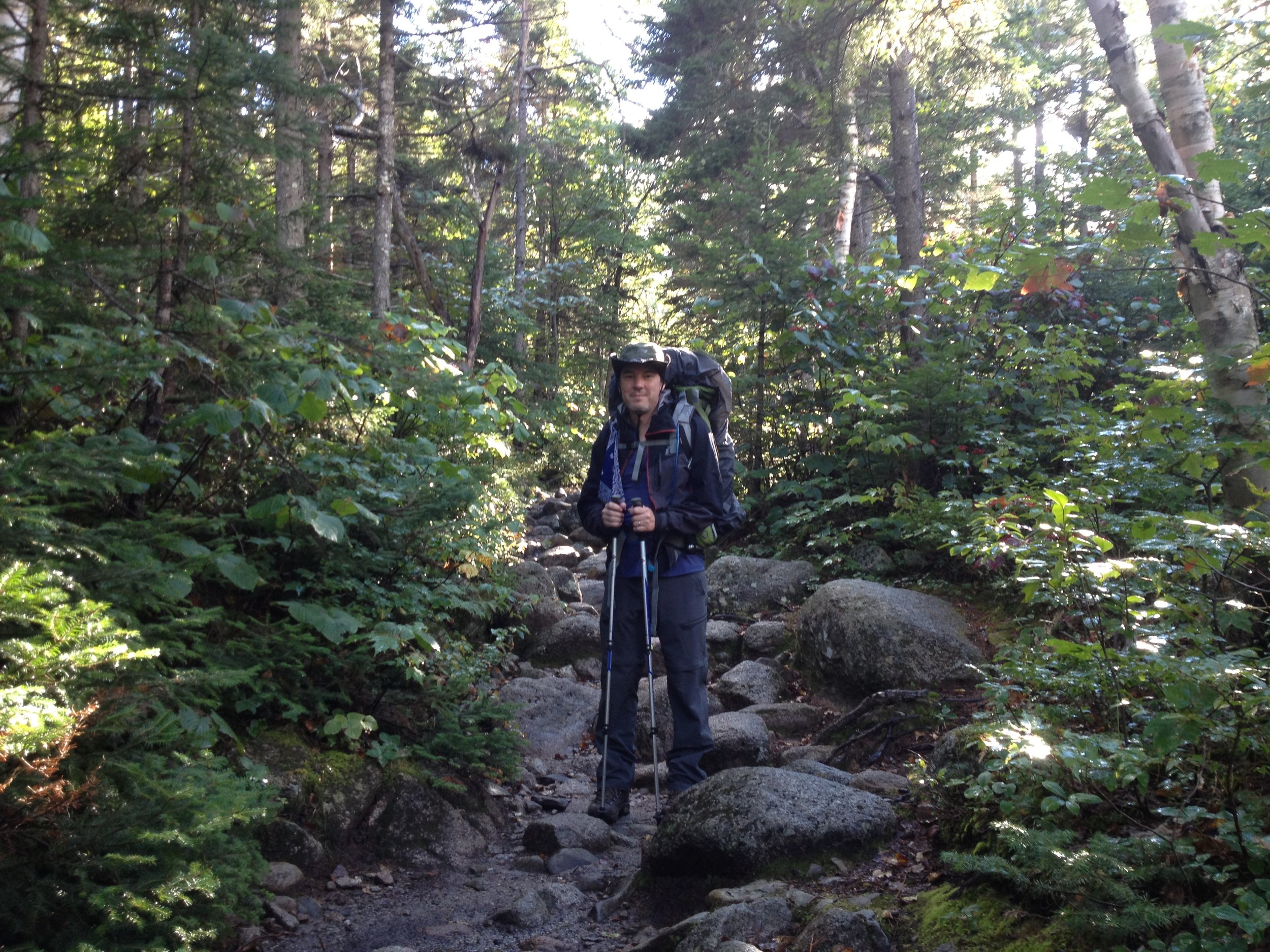








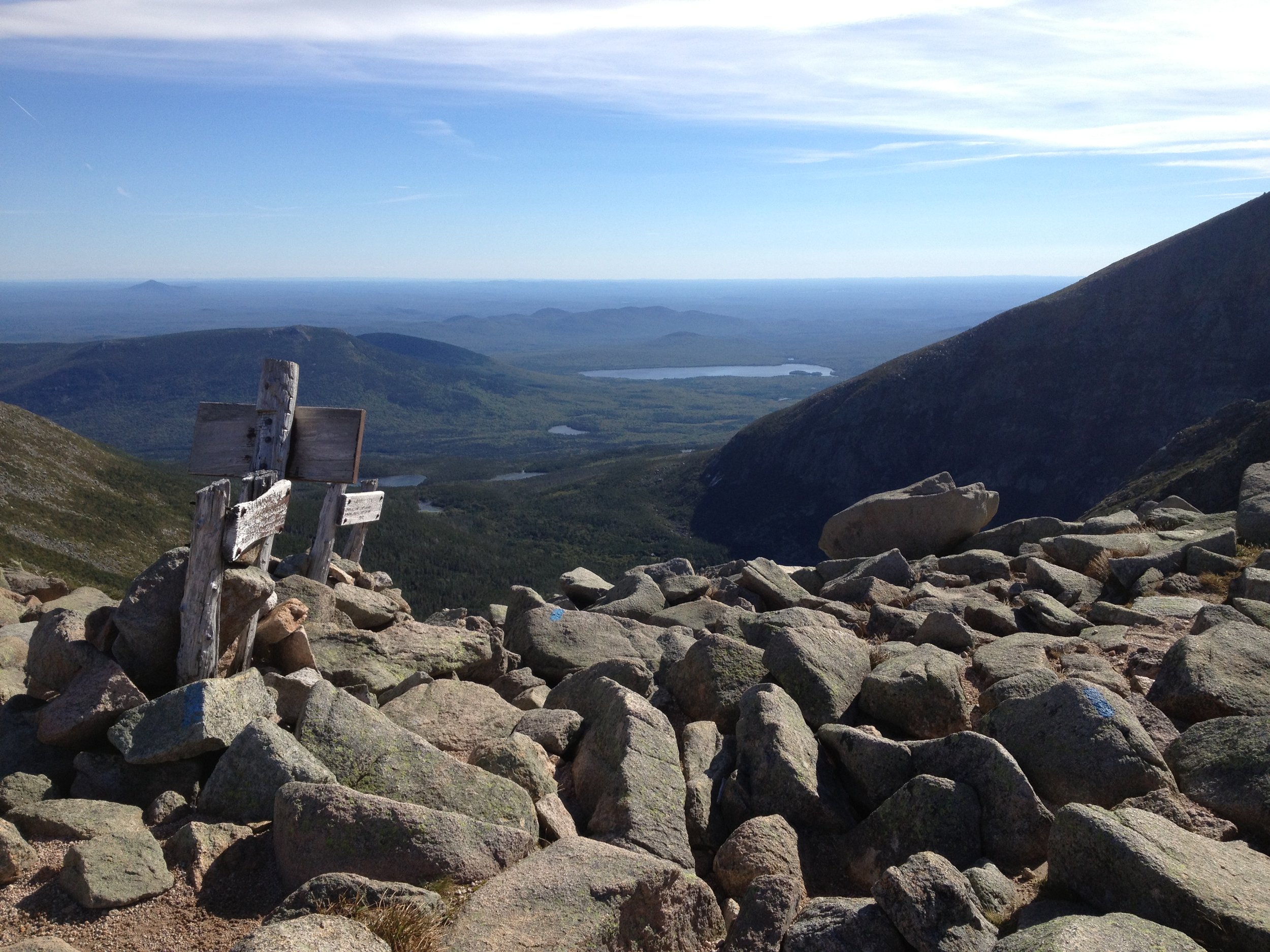










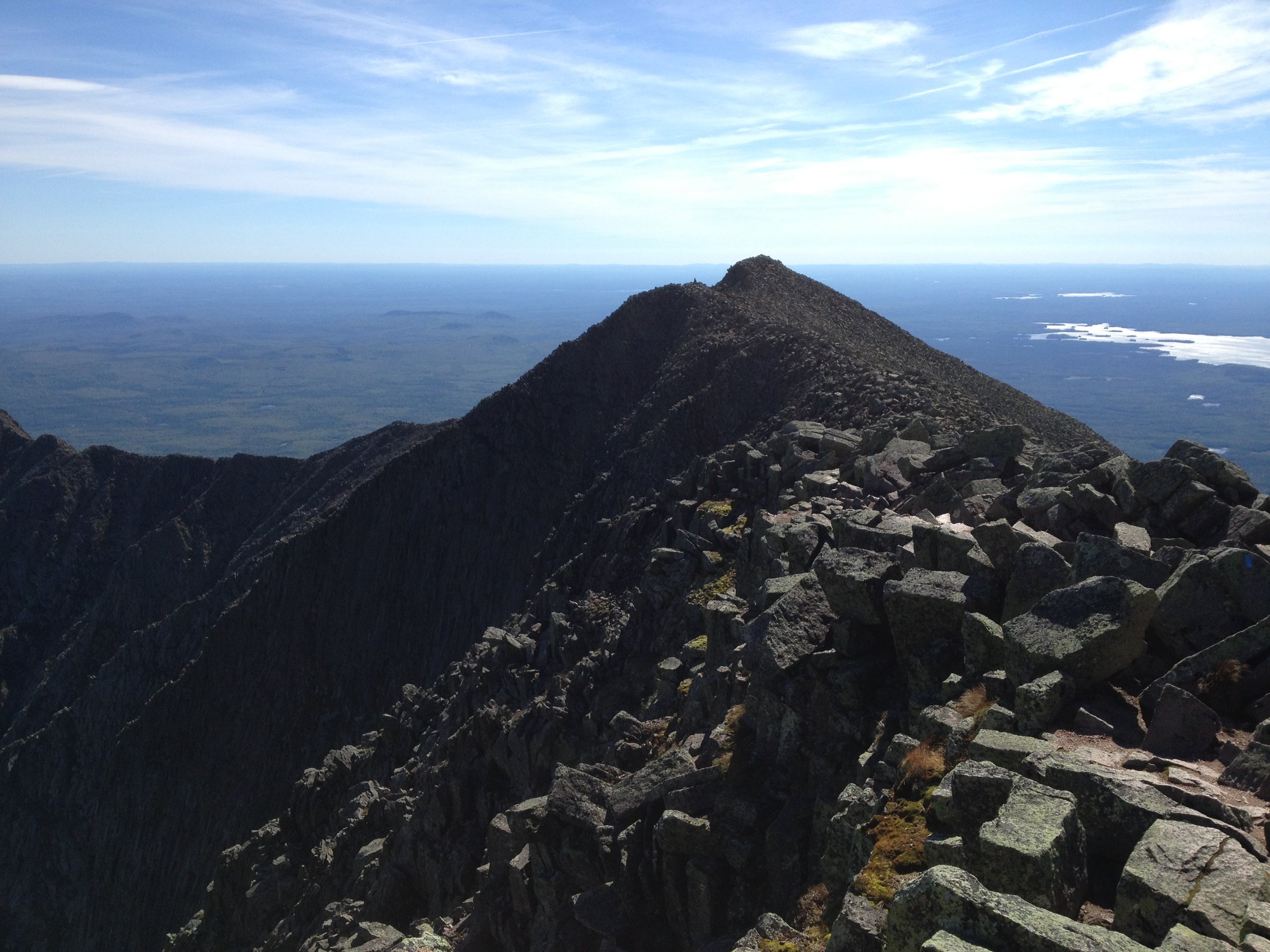










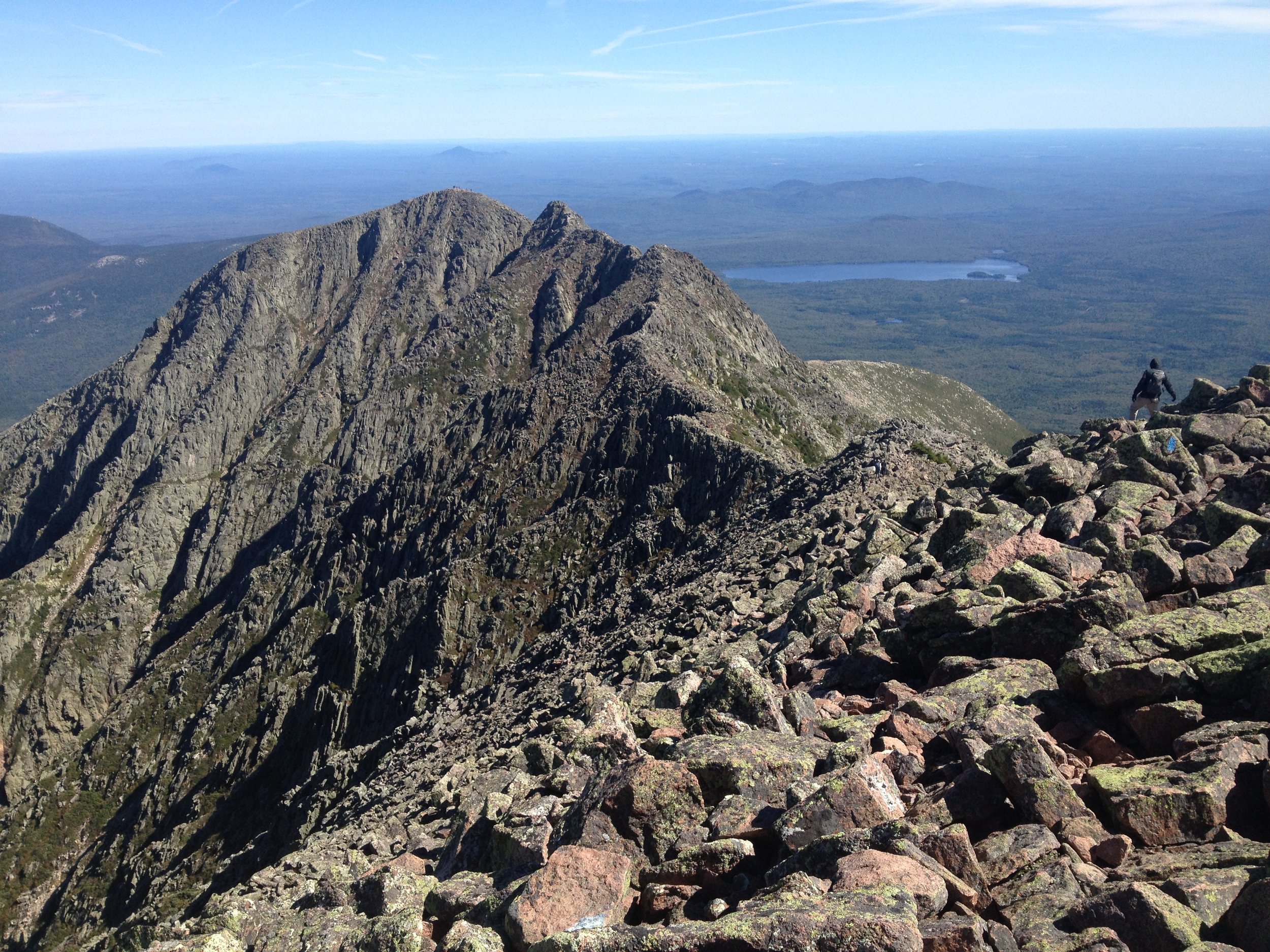
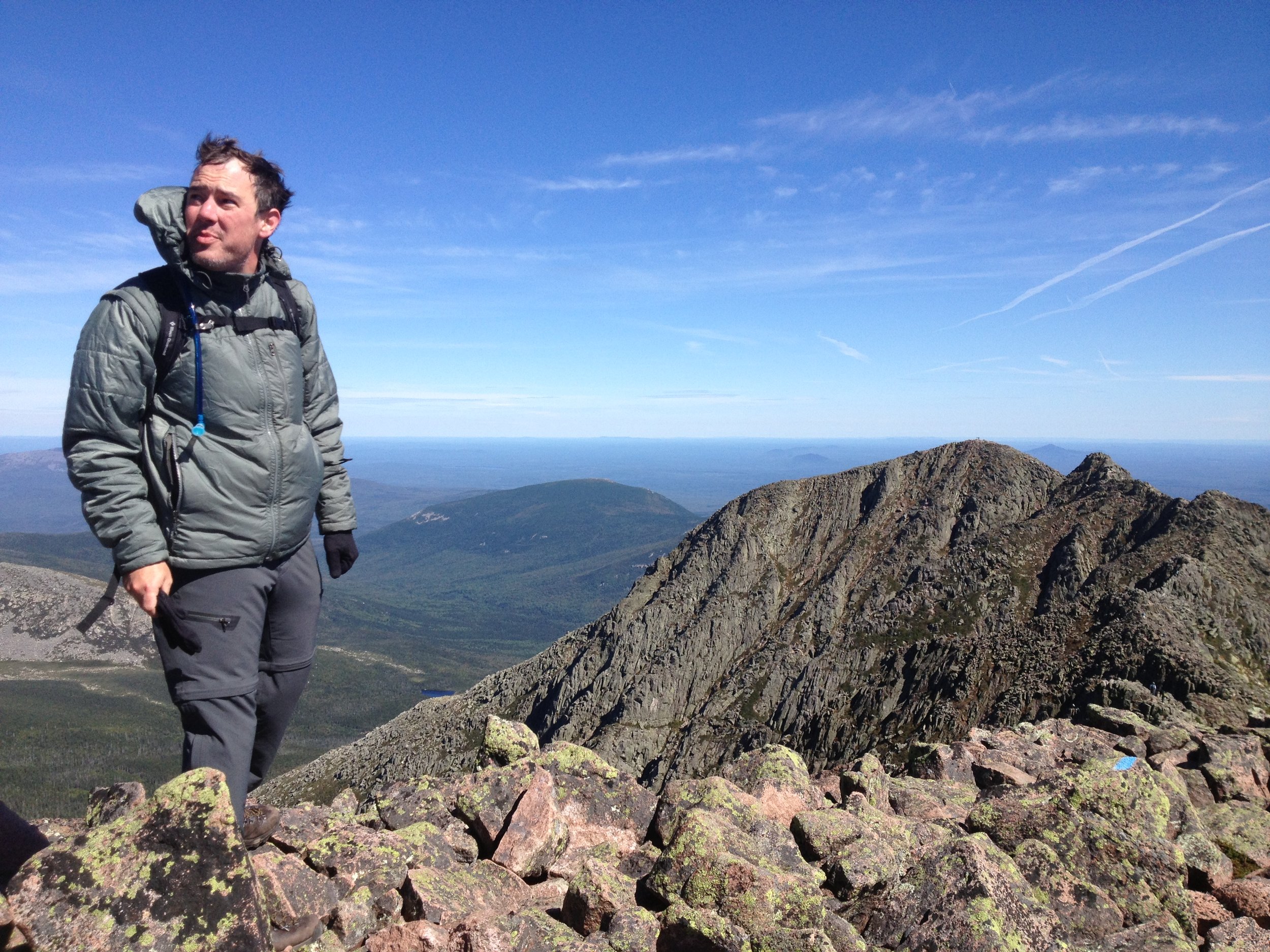








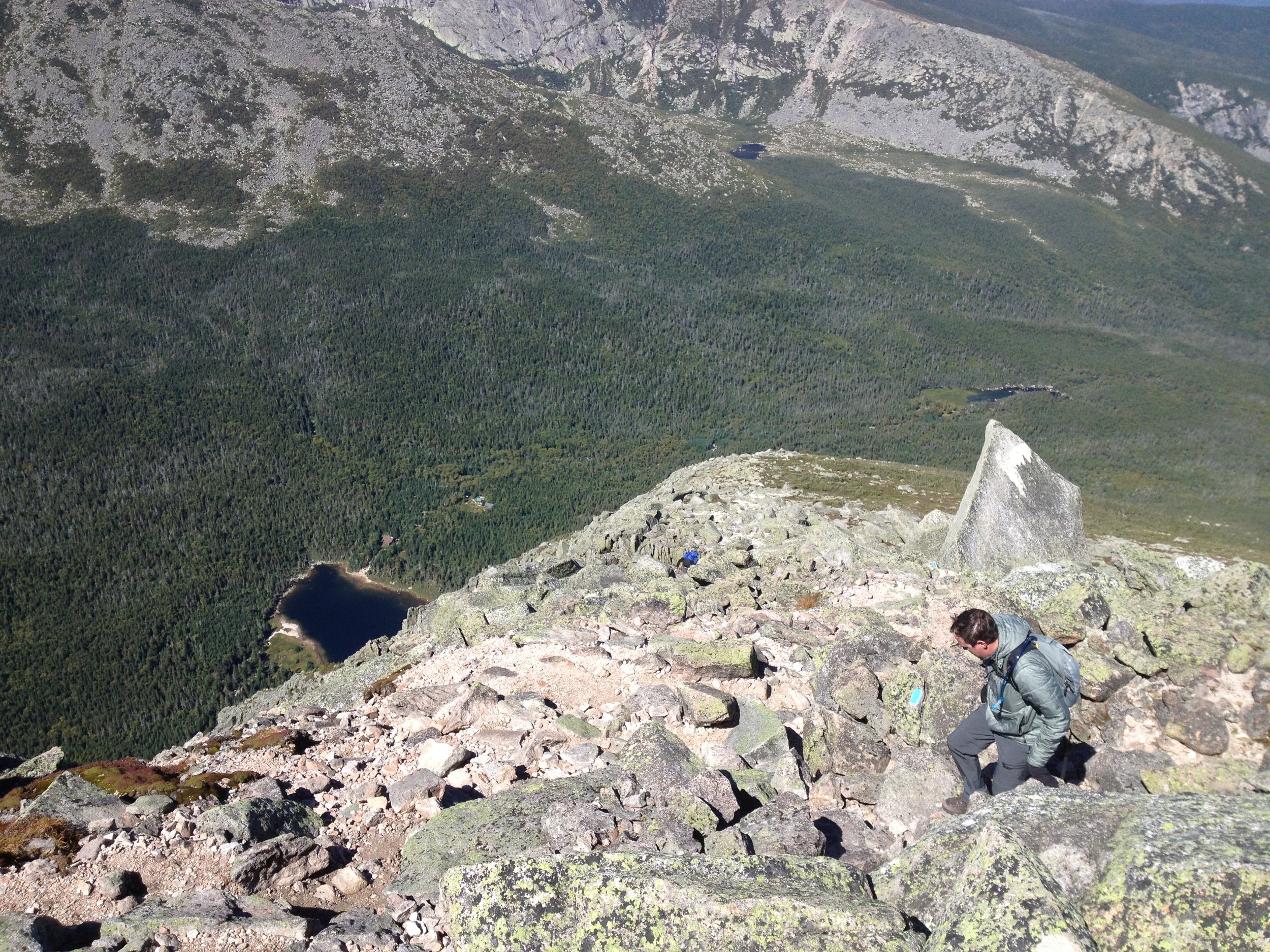

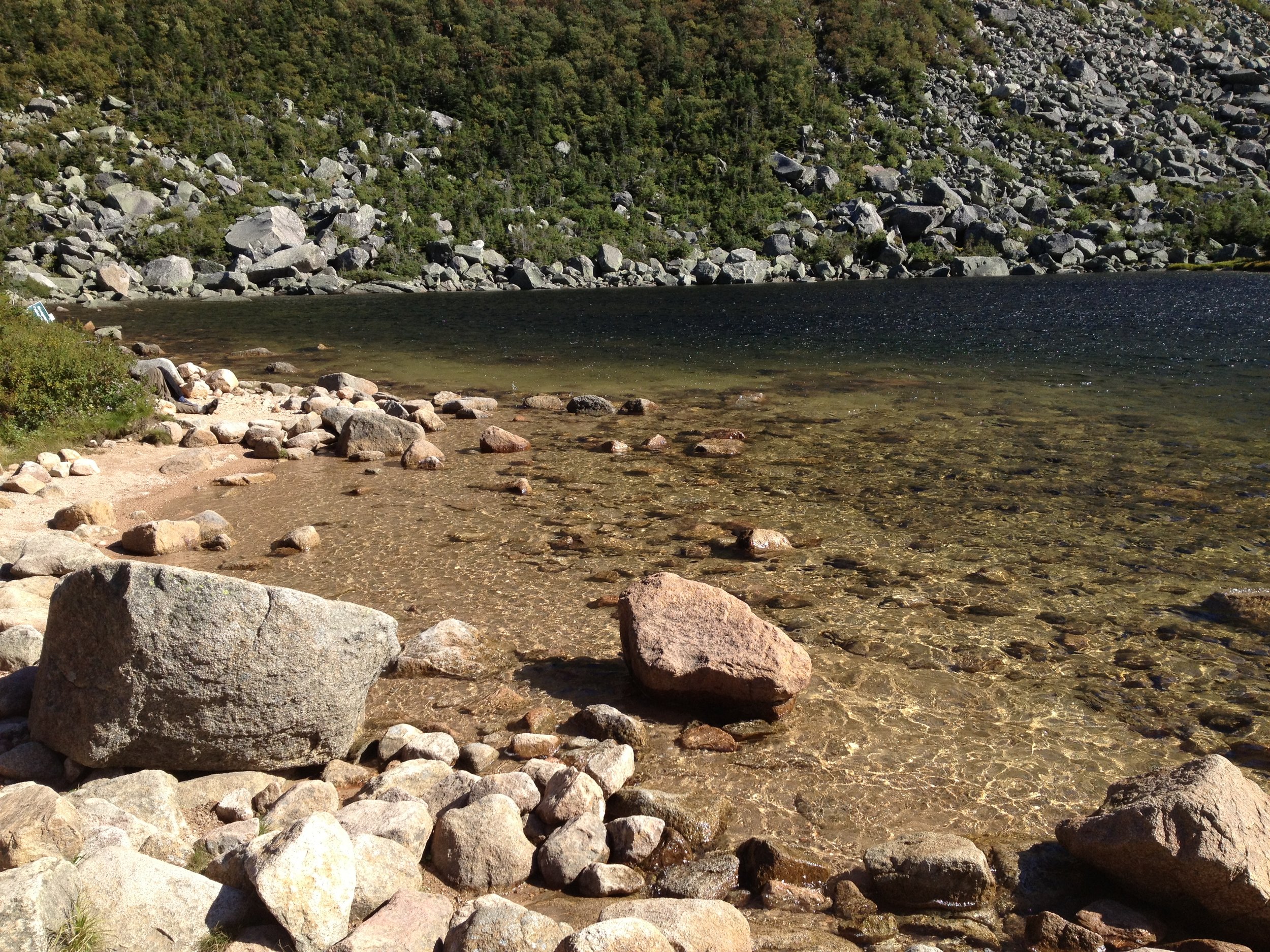





On the Knife Edge
Katahdin was a deeply moving experience, especially given the rough logistics of travel, reserving a place to stay in the park, and praying for good weather. Pamola and the other gods of the wilderness were kind to us. And after watching innumerable videos of the Knife Edge and psyching ourselves out over a few known trouble spots, we made it down to hike again.